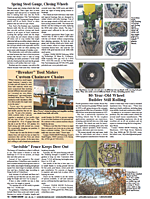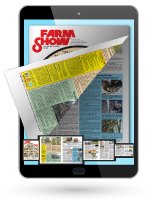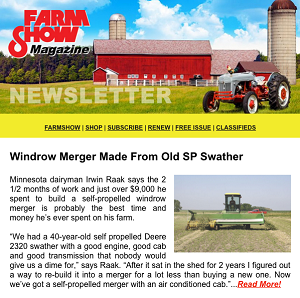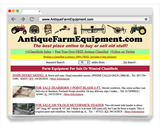You have reached your limit of 3 free stories. A story preview is shown instead.
To view more stories
(If your subscription is current,
click here to Login or Register.)
Researchers Explore Ancient Wheat Traits
Ancient wheat and wheat ancestors may be a source for disease-resistant wheat traits. The concept is being explored at over 38 locations from Kansas State University to the John Innes Center in Norwich, England and beyond. Researchers are working with Open Wild Wheat, a directory that includes the genetic sequences of
..........
You must sign in, subscribe or renew to see the page.

You must sign in, subscribe or renew to see the flip-book
Researchers Explore Ancient Wheat Traits
Ancient wheat and wheat ancestors may be a source for disease-resistant wheat traits. The concept is being explored at over 38 locations from Kansas State University to the John Innes Center in Norwich, England and beyond. Researchers are working with Open Wild Wheat, a directory that includes the genetic sequences of 150 wild wheats belonging to a wild relative of modern-day wheat. Two other ancient grains are also being investigated.
The Open Wild Wheat Consortium (OWWC) is co-led by Dr. Jesse Poland of Kansas State University. He describes the project as looking to unlock traits in the original wild wheat relatives that have been left behind.
While domestication over the past millennia improved grain yield, seed size and nutritional content, it also served to limit traits like resistance to biotic (disease) or abiotic stress (drought). Poland notes that this threatens sustainable wheat production and world food security.
Open Wild Wheat was crowd-funded with contributions from academic institutions and industries in 15 countries. They raised $150,000 to finance the sequencing.
OWWC group leader Dr. Brande Wulff, previously with the John Innes Center, explains the need to look at these genetic sequences. He notes that the ancient cousins have a genetic diversity that has been lost.
The effort has benefited from two newly developed technologies. Speed cloning allows breeders to clone candidate genes recovered from the directory. Speed breeding, an intensive wheat growing platform, allows breeders to move identified traits into elite, modern wheat varieties rapidly.
The directory contains staggering amounts of data. If printed, the pages would stretch from the Earth almost to the moon. Searching through this data for traits resistant to wheat stem rust or powdery mildew is like looking for a needle in a haystack.
However, the needles are being found. Wulff reports that four resistant genes have already been identified with the new technology.
At the same time, the John Innes Centre is examining the genomes of 827 wheat samples gathered from 32 countries in 1922. Theyíre the remains of a British collection that once totaled 7,000 samples. The rest were lost due to insect damage, disruption in upkeep during World War II, and a lack of dehumidification and refrigeration in the collectionís early years.
Simon Griffiths is the group leader of Delivering Sustainable Wheat at the Centre. He and his team have spent the past decade differentiating those landraces from modern wheat.
They also sequenced 208 modern cultivars to compare the old with the new. This allows them, he explains, to quickly identify variants absent in modern wheat. They found that 60% of the variants were not present in the modern varieties. Of seven ancestral groupings, only two were present.
Various beneficial traits have been identified, including genes related to increased yield, increased stripe rust and septoria resistance, and increased nutritional benefits like calcium, zinc and iron.
A gene for resistance to wheat blast, a fungal disease spreading in tropical areas, has been cloned. One of the old landrace varieties is resistant to slugs. Slugs simply donít like the variety and leave it alone, reports Griffith.
The projectís genomic data and resources, including seed, are available to outside researchers and wheat breeders at no cost. The challenge remains introducing the new/old traits while maintaining optimal trait combinations in modern varieties.
Contact: FARM SHOW Followup, Open Wild Wheat Consortium, Brande Wulff, Plant Science Program, Biological and Environmental Science and Engineering Division, King Abdullah University of Science and Technology, Thuwal 23955-6900, Kingdom of Saudi Arabia (andrea.gonzalezmunoz@kaust.edu.sa; www.openwildwheat.org) or Simon Griffiths, The John Innes Centre,
Norwich Research Park, Norwich,
NR4 7UH, United Kingdom (ph 44 1603 450000; comms@jic.ac.uk; www.jic.ac.uk).
To read the rest of this story, download this issue below or click
here to register with your account number.





